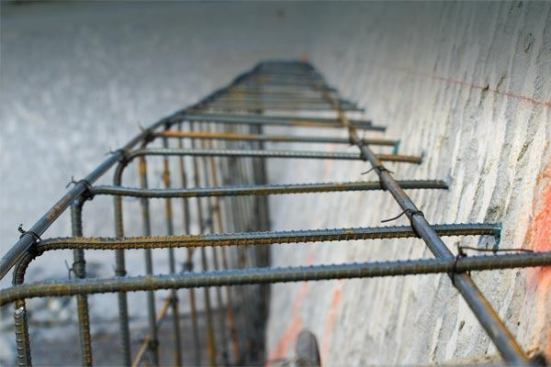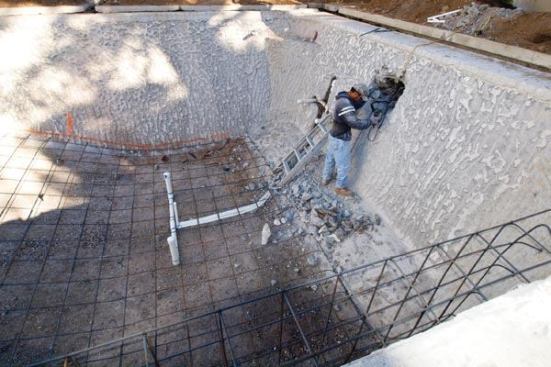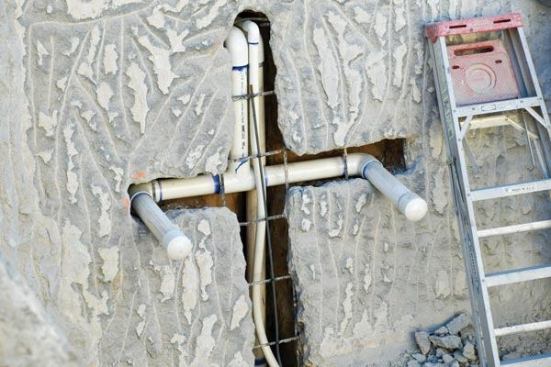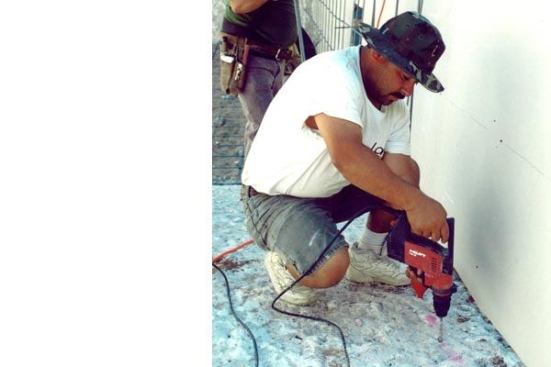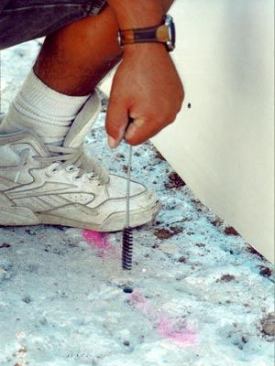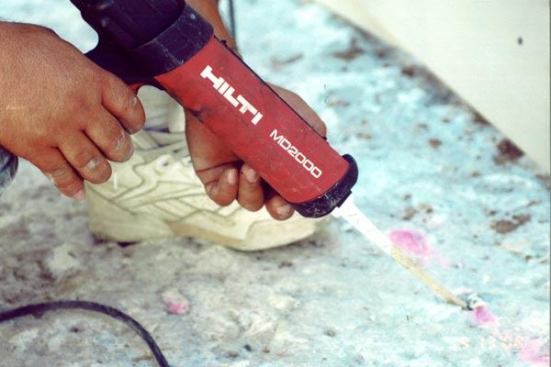Inject the epoxy
To permanently bond the new rebar to the existing concrete, a two-part epoxy is put into the holes.
Make sure to put in both parts. Without one, the other is useless. “We found times when builders didn’t use the second part of the epoxy,” Toth says. “Two days later it’s still like mush in there.”
Inject the substance all the way to the end of the cavity. “It’s not enough to put some at the front and expect that when you put the bar in, it’s going to push the epoxy all the way to the back,” Peterson says. “You have to start the injection at the back side and then inject as you withdraw the nozzle on the epoxy gun.”
This is done in two ways. The most common comes in a dual-tube system that craftsmen squeeze into the hole. The tubes and nozzles sit side by side, with the contents of each tube coming out simultaneously.
Toth says the gun itself often can’t push the material back far enough. “I take a coat hanger and push it in the rest of the way,” he says. “It’s kind of a time-consuming process, but you really want to make sure you get as much in there as you can.”
These systems are designed to release the same amount of material out of each side, so watch to make sure it does so.
The second method consists of small, epoxy-filled glass capsules that are inserted into the penetration. The capsules come in various sizes, with manufacturers supplying instructions for choosing the right one. These are inserted into the hole. When the rebar is put in, the capsules break.
“The glass adds sort of an aggregate to it that theoretically helps the bonding process,” Peterson says. This process is very clean, but also more expensive, he adds.
